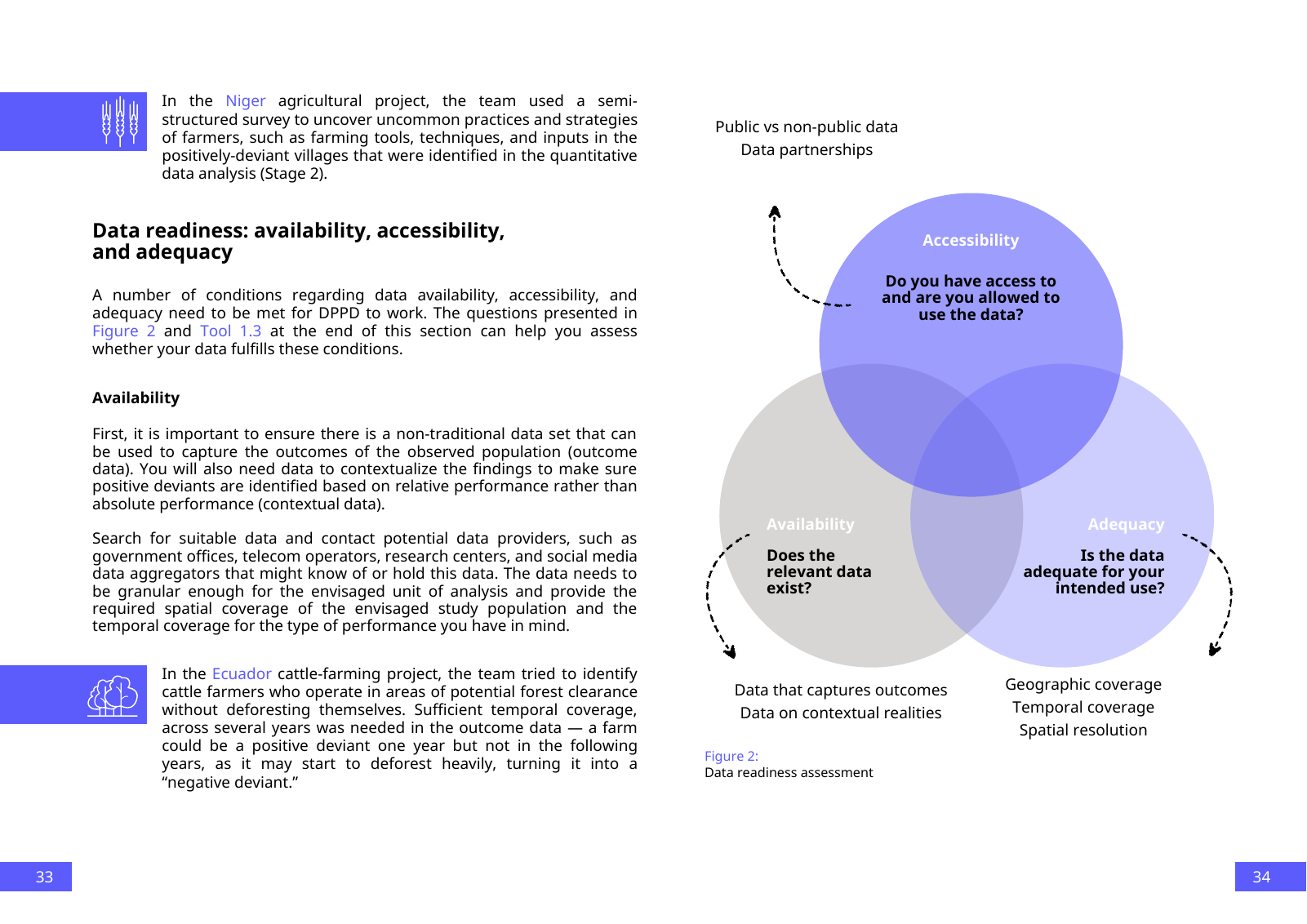In the Niger agricultural project the team used a semi structured survey to uncover uncommon practices and strategies of farmers such as farming tools techniques and inputs in the positively deviant villages that were identified in the quantitative data analysis Stage 2 Data readiness availability accessibility and adequacy A number of conditions regarding data availability accessibility and adequacy need to be met for DPPD to work The questions presented in Figure 2 and Tool 1 3 at the end of this section can help you assess whether your data fulfills these conditions Availability First it is important to ensure there is a non traditional data set that can be used to capture the outcomes of the observed population outcome data You will also need data to contextualize the findings to make sure positive deviants are identified based on relative performance rather than absolute performance contextual data Search for suitable data and contact potential data providers such as government offices telecom operators research centers and social media data aggregators that might know of or hold this data The data needs to be granular enough for the envisaged unit of analysis and provide the required spatial coverage of the envisaged study population and the temporal coverage for the type of performance you have in mind In the Ecuador cattle farming project the team tried to identify cattle farmers who operate in areas of potential forest clearance without deforesting themselves Sufficient temporal coverage across several years was needed in the outcome data a farm could be a positive deviant one year but not in the following years as it may start to deforest heavily turning it into a negative deviant Availability Does the relevant data exist Accessibility Adequacy Data that captures outcomes Data on contextual realities Geographic coverage Temporal coverage Spatial resolution Do you have access to and are you allowed to use the data Is the data adequate for your intended use Public vs non public data Data partnerships Figure 2 Data readiness assessment 33 34

Hinweis: Dies ist eine maschinenlesbare No-Flash Ansicht.
Klicken Sie hier um zur Online-Version zu gelangen.
Klicken Sie hier um zur Online-Version zu gelangen.